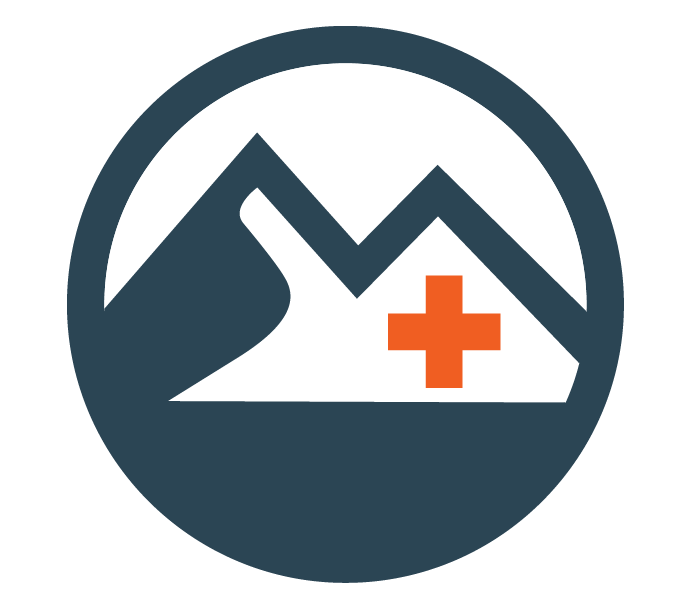From Desk to Uniform: An EMR Student Journey
The following is a story from one of our alumni. It is his expression of how he went from working an unfulfilling desk job to working for the BC Emergency Health Services. If he can do it, you can too! If you have any questions on how to become a paramedic, please don’t hesitate to reach out: support@wildernessfirstaidtraining.ca.
The Seed is Planted
Growing up, I never thought I could be a paramedic. That seemed like a job for someone else - not me. Instead, it seemed that family and society wanted me to go to university. This landed me straight into the confines of a desk. After a few years, the view from my office window was starting to lose its colour. Burnout was real. Throughout this time, I had also picked up outdoor recreation. The time spent in the mountains seemed brighter than that spent in the office. Maybe something out there held the key to what I was looking for. A few adventures and diversions later, I landed straight into Coast Wilderness Medical Training’s Wilderness First Responder course at the suggestion of a friend.
When You Know, You Know
Heading into the course, I had no idea what to expect. That’s why it was a surprise to find myself in my boss’ office the next Monday handing in my month’s notice. After seeing the passion with which the instructors and other students were living their lives, I knew that I wanted that for myself. The content of the course had also sparked a fire I hadn’t felt before. The combination of mental and physical skills required to perform first aid was enticing. This was it. I was finally starting to find the pieces of the puzzle I’d been looking for.
The Path Forward
Since Coast Wilderness employs paramedics and professional responders as instructors, I was also starting to get exposed to what my career path would look like. They were extremely knowledgeable and helpful in walking me through the required steps. As soon as I put in my notice for work, I signed up for the Upgrade to EMR course, knowing that I would get top-notch instruction from experienced practitioners. The course did not disappoint! An intense week of daytime lectures and night simulation practices got me licensing-ready!
Exams, Exams & More Exams
After I finished my EMR course, I started working through all the pieces I’d need to get ready for my BC Emergency Health Services Application.
A quick read through of the handbook and I was ready for the knowledge exam. A few wrong answers later…. A PASS!
Next up the actual driving test! I was going for the restricted license, so wasn’t too concerned about the driving as it was going to be in my own car. What I was worried about was the pre-trip inspection. Study that section closely!
After you pass your driving test, you aren’t in the clear quite yet! A short medical exam will secure you your Class 4 License.
I tried to take the online exams as quickly as I could after my EMR class while the knowledge was still fresh. Focusing on textbook-based knowledge such as pathophysiology seemed to help.
Once the practical exam dates were scheduled, I started running simulations with friends! Getting as much practice as possible helped me feel calm and comfortable going into the exams. It’s ok to not be successful the first time around, you’ll get it in the end!
A High School Diploma or Higher
Digging up my UBC degree, I completed all the requirements needed to apply!
Once I had all those together, I was able to fill out and submit my application! It was out of my hands now and the waiting game started.
The Final Steps!
Within a few weeks I heard back that I was going to get an interview! The process was back in my hands. Here’s a little summary of the process that I experienced next:
Interview
Reflect back on your previous work experiences and how they can relate to the paramedic career. The STAR format will help you ace this portion!
Reference Check
If you pass the interview, they will reach out to your references. Make sure you choose folks that are able to comment on your suitability for the job and have known you for a while.
Offer of Employment - WAHOO! If you pass the reference check you’ll get an offer for employment. This will also include a few things:
Medical Assessment - Nothing to worry about, a similar check up to the one you did for your driver’s license test!
Physical Assessment - Get ready for a lot of lifting and repetitive tasks in awkward positions.
Criminal Record Check - Pretty self-explanatory.
Formal Job Offer
If you are successful in all the previous steps you will go into a hiring pool! Now you need to wait for an opening at an ambulance station.
Once you get the call from Talent & Acquisition offering you a station, you can accept or decline it and wait for a different station.
Congratulations and welcome to the service!
Welcome!
After months of studying, applying and working through all the steps, I finally had my New Employee Orientation (NEO) day set! Walking into that classroom the first day was one of the most exciting experiences of the process. Here I was, mere months after quitting my job, now starting my new career as a paramedic. How quickly life can change!
So that’s how I went from working away aimlessly at my desk job to proudly wearing the paramedic uniform! If I can make it happen, so can you!
Start Your Journey!
Feeling inspired by our student’s story? Start your own by taking our EMR or Upgrade to EMR class now! Need help navigating the journey? Email us at support@wildernessfirstaidtraining.ca and we’ll help you every step of the way.





